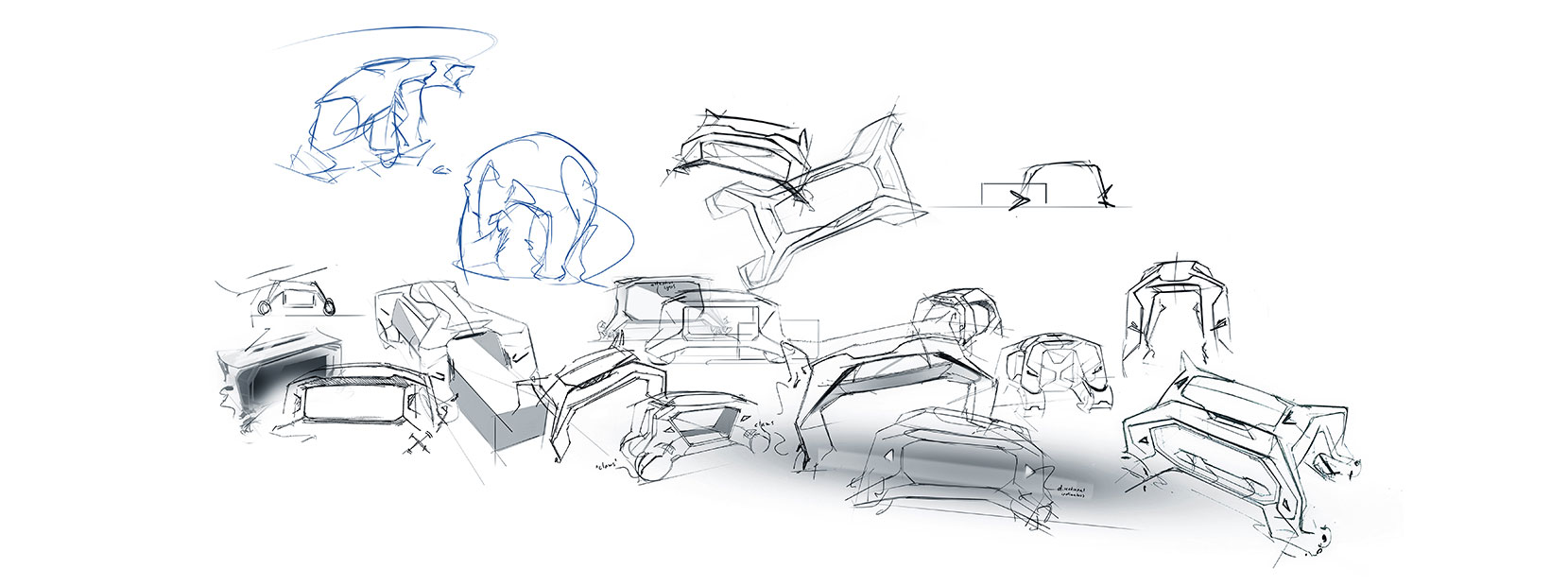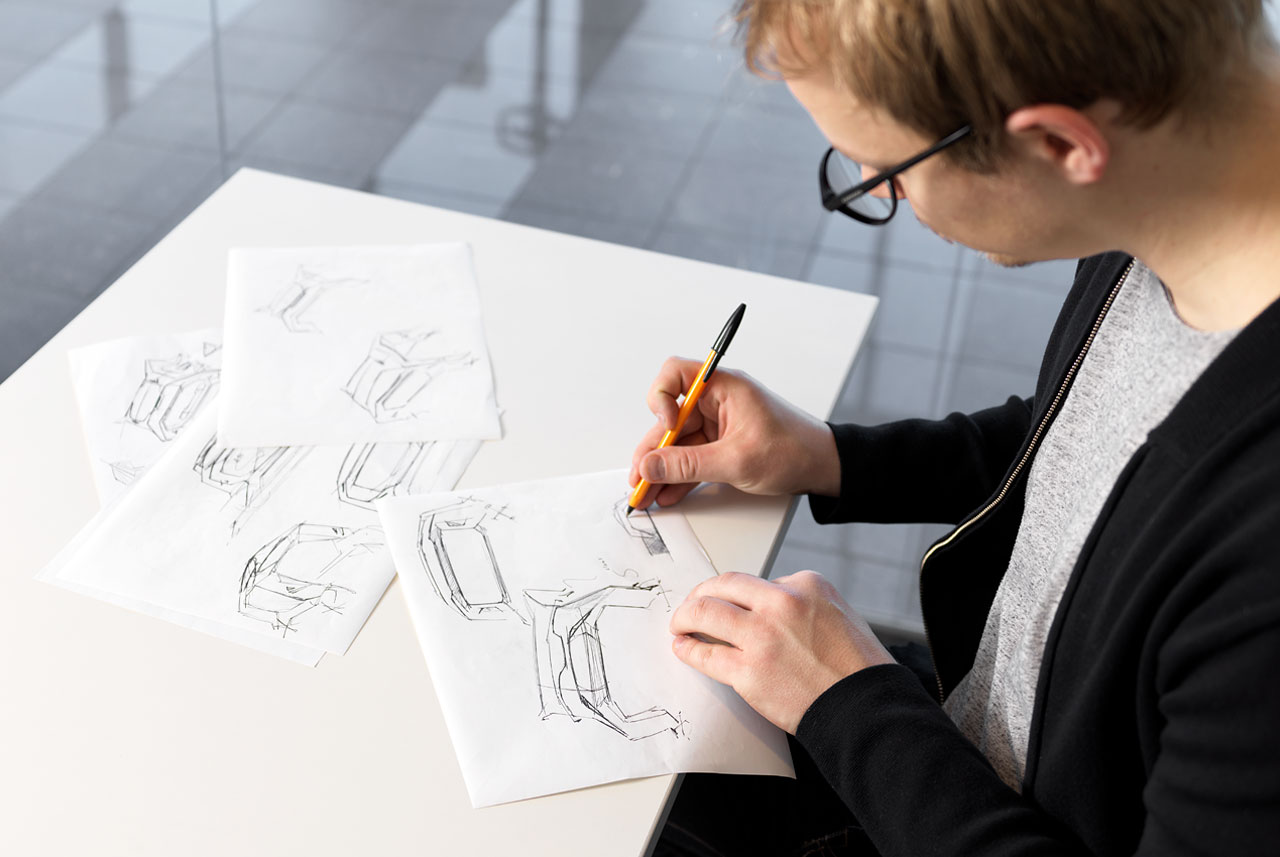


Umeå Institute of Design is way up there.
TEXT BY LARS NORÉN
He’d considered going to the RCA School of Design in London, but opted for Umeå, in the end. Not only is Umeå a long way up in Sweden, it’s also way up there in the rankings of the world’s foremost design schools. RCA would have set Viljami Räisänen back quite a bit, whereas Umeå design institute was free. So that’s where Viljami Räisänen got his master in transportation design.

Was designing trucks what he’d set his sights on, I was curious to know. No, it was cars for Viljami Räisänen, probably still is judging by our conversation. Räisänen, who hails from across the water, in Finland was just about to conclude a nine-month internship at Toyota Material Handling in Mjölby, when I met him. “I’d heard about this competition and knew that two Finnish girls had won it two years previously,” he said. So, together with two other Umeå students, Räisänen entered the Toyota Logistic Design Competition in 2016, and won third prize.

FUNCTIONS FIRST, AESTHETICS SECOND?
“Sometimes I want to give [the truck] a radical shape at the beginning of the design process,” Räisänen said. We’d been talking about how ideas and suggestions are batted back and forth between the engineers and the designers. And how the design can get squeezed. “This isn’t exactly car design… but every principle in design can be applied to any product.” Viljami Räisänen talked about what he considered the most important things to keep in mind in his job: functions and user needs. “This thinking goes for any product,” he said.
Räisänen believed the biggest difference between car and material handling design is to do with emphasis. With cars the marketing aspect is crucial, in Räisänen’s opinion. And with trucks it’s the functions that are the main focus.
What made Viljami Räisänen go into design? “Ever since I was a kid I wanted to do something creative. I love using my imagination and combining it with practical aspects,” he said. “I wanted to work for myself and make money out of it.” At the beginning he was interested in all kinds of design, such as graphics, for instance. But the thing that fascinated him the most was drawing cars.

SHUNS THE FLASHY
Did Viljami Räisänen have any particular design ideals? “I prefer Scandinavian design ’cos it’s based on pure function,” he said, and thought he felt this way simply because he’d grown up in that part of the world. It didn’t come as a surprise to hear he ascribed to the notion that less is more. “The design shouldn’t reflect anything other than [the product’s] usage.” He thought German brands of cars and Volvo are good examples of this thinking. “They don’t show off too much, and they’re very good quality,” said Räisänen. “The Audi A4 looks pretty simple with vertical [tail] lights… It’s quite minimalistic, really. And that goes for their whole product range.”
So what did he think of the new Volvo? His response was swift: “The XC90 is a very good-looking car, I think. And it reflects Volvo’s heritage.”
CROUCHING BEAST WITH A SCREEN FACE
No one knows what the future will look like until it knocks on your door. Chances are it could be T.A.D., the Toyota Automated Delivery concept, bringing you that large package from Ikea right to your doorstep. Said Räisänen about how it all came about: “I think automated delivery will become a big thing, once traffic regulations allow it. And I thought Toyota should get involved in the area.” So, he chose to develop an autonomous delivery vehicle. “The functions I wanted determined the design process.” Räisänen soon found his invention didn’t look anything like a car. “With its wide-looking ‘limbs’, it reminded me more of a strong animal… a polar bear, maybe,” he said. The idea is customers select their items with the help of a smart-phone application. T.A.D. finds the packaged product in the store, and then carries it, in its large ‘belly’, to their home address. Should be a welcome invention.

INTERGALACTIC JOURNEY
To what extent can a transportation designer apply his skills in other areas of design? “Well, you take Daniel Simon, for instance,” said Räisänen, “he came from car design originally, but now works more in the movie industry.” His cv reads like a dream for a car designer, with spectacular designs for Bugatti and Lotus, to name some. These days he’s busier working on Hollywood productions, though, providing the big studios with space-age vehicles taking you to the edge of design. “I like his approach, particularly his geometrical shapes,” Räisänen said. “Although they’re imaginary products they still look like they belonged to reality.”
As a young man, Räisänen has every right to dream.
